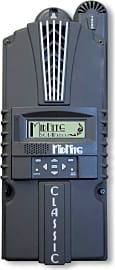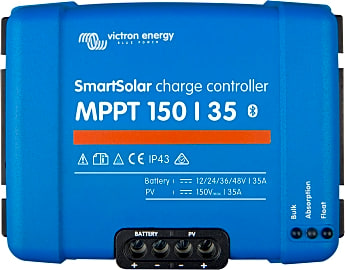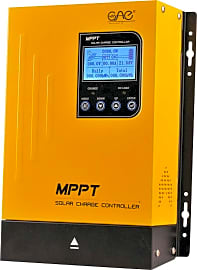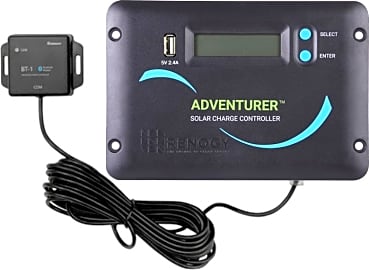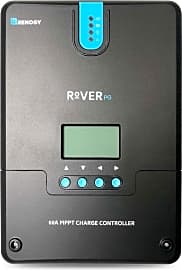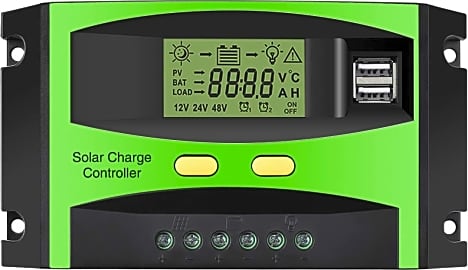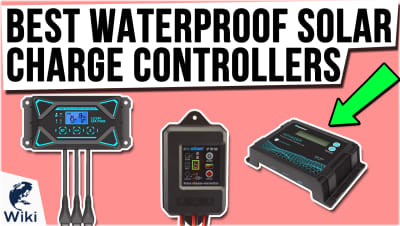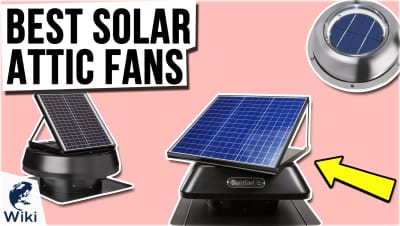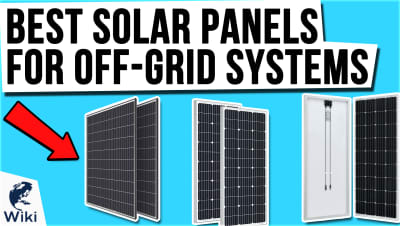The 10 Best Solar Charge Controllers

This wiki has been updated 24 times since it was first published in February of 2019. Solar power systems can be quite sophisticated, and several components need to be in place to keep them performing properly. One of these is a charge controller, which manages the electric current going to the battery bank from the panels. Here we rank these devices for functionality, safety features, reliability, and price. Be sure to hire a licensed installer for the setup. When users buy our independently chosen editorial selections, we may earn commissions to help fund the Wiki.
Editor's Notes
November 24, 2020:
The highly rated Outback Flexmax FM80 joins our list today in a prominent spot as a reliable, user-friendly choice that’s backed by a generous five-year warranty. This MPPT device is designed to maximize the power yield from your panels, and you can read its status with ease on the brightly backlit LCD that can show up to 80 characters at a time. If you’re interested in viewing the history, this one logs data for 128 days. It can also be managed remotely when you purchase a separate control panel and a hub. We also added in the American-made MidNite Solar Classic, and one of the features that helps this one stand out is its proprietary HyperVOC technology that extends the maximum voltage input when needed, which actually comes in handy on cold winter mornings. Unlike some others, it’s also got protection from arc and ground faults, and it allows for free web monitoring. In addition to a solar mode, it offers ones for wind- and hydro-generated power.
The WindyNation P30L also comes on board, as a simple, yet reliable PWM model with a comprehensive LCD and three-button control panel. Unlike some of the competition, this one is compatible with a variety of batteries that include absorbent glass mat, lead-acid, gel, and lithium ion ones. To make room for the three new models in today’s update, we removed the Renogy The Wanderer, which is highly similar to the PWM Renogy Adventurer. We also say goodbye to the GHB 20A and the PowMr EM2460, neither of which are available at this time. As mentioned in our last update, be sure any model of controller you purchase is compatible with your solar system. Higher wattage solar panels may require the use of the more sophisticated maximum power point tracking (MPPT) devices rather than simpler, less sophisticated pulse width modulation (PWM) ones. If you need a model that stands up well to wet conditions, check out our list of waterproof solar charge controllers.
March 25, 2019:
A reliable charge controller is necessary for a well-functioning solar power system, as it ensures the batteries do not become overcharged, and that the power doesn’t run backwards and drain the batteries during the night. There are two different types of these devices. First off, pulse width modulation (PWM) models make a connection directly from the panels to the battery bank. In order to do so, they have to convert the voltage from the array into a lower one that the battery can handle. They’re the more affordable way to go. Plenty of these made our list, including the Bluetooth-enabled Renogy Adventurer and the user-friendly PowMr 30A. The second type of controller is the newer, maximum power point tracking (MPPT) model. While pricier up front, they’re more efficient than PWMs, as they utilize more of the available power from the modules. The highly efficient Epever 80A made our top spot, as it delivers a quick charge while providing plenty of built-in controls and protections, and it’s equipped with a convenient remote panel, to boot. Or, consider the Victron Energy SmartSolar, which offers a handy app by which you can view your usage stats and program its operation. In addition to the PWM and MTTP factor to consider, some selections have additional capabilities like lighting control, such as the Mohoo with Dual USB port, which is featured on our list. This enables it to automatically turn the attached light on at dusk and off at dawn. Whichever you choose to go with, make sure it has the features you desire and is compatible with the other components of your system.
Special Honors
Morningstar EcoBoost MPPT This highly efficient device automatically detects 12- or 24-volt system configuration, and ensures batteries attain a complete charge, while it protects them from over-discharge and helps maximize their lifespan. It’s got two USB charging ports that can power small DC loads directly. It’s compatible with photovoltaic DC electrical systems of up to 1,120 watts. Its maintenance-free design consists of a circuit board with a conformal coating as well as corrosion-resistant terminals. morningstarcorp.com


